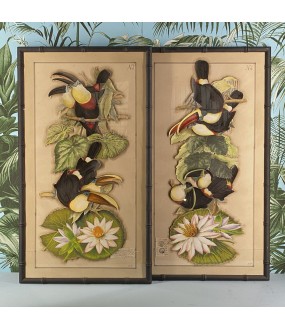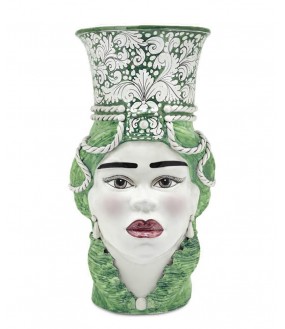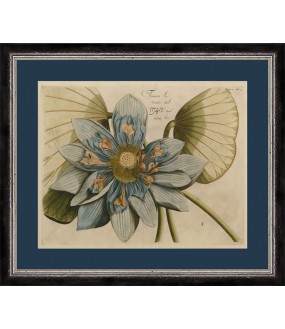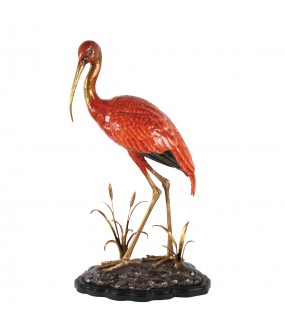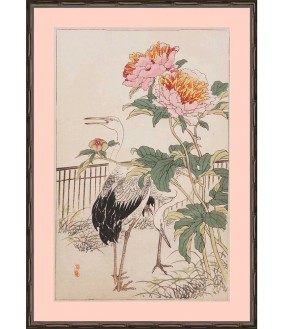Objects of Curiosities
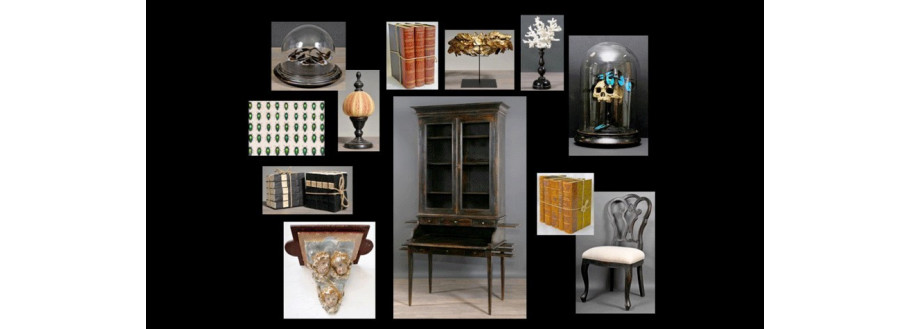
Find in this section objects of curiosities, unusual objects and unique pieces of Art & History and a selection of genuine and original antique furniture or current production drawing inspiration from the past.
To find more, please click here.
-
Antique Parrots Engravings, Set of 2
€864.00A set of two beautiful reproductions of engravings of magnificent flamboyantly colored parrots whose species have unfortunately disappeared.
Engravings with powder pink marie-louis and very beautiful black wood ornamentation frame.
Glass size: 50x70cm
-
Toucans Engravings Made by Collages
€2,990.00A pair of magnificent Toucans engravings made from collages of old juxtaposed engravings which are previously hand painted.
A magnificent artisanal work of remarkable finesse executed in Italy according to an ancestral process.
Within each frame an atmosphere is created by a juxtaposition of exquisite hand engravings which are engraved and printed on vintage presses from the 1800s.
Each image is printed in black and white, individually hand colored with gouache and in watercolor then cut out.
Superb and one of a kind.
-
Ceramic Vase, Green Woman Moor Head
€900.00Ceramic vase, head of a Moorish woman, Sicily - Italy.
Handcrafted in ceramic, double fired and hand painted in Italy.
The moors were members of Muslim people of North Africa, of mixed Arab and Berber descent. In the 8th century they were converted to Islam and established power in North Africa, Sicily and Spain, where they established a civilization (756–1492).
THE LEGEND :
During the Arab domination in Sicily, in Palermo city, there was an Arab Suburb called "La Kalsa".
In this small suburb was living a beautiful young lady who used to spend her time in taking care of the flowers on her balcony.
One day, a young moor was walking down the lady's balcony. He noticed the beauty of the lady and he truly fell in love with her.
He did not wait a minute to declare his love for her, and the beautiful young lady, impressed by the lover's boldness, started feeling the same love.
Unfortunately, the young moor was already married and was father of a few kids... as soon as the young lady found out that he would have left for going back to his family, she waited until the night and killed him while he was sleeping deeply. She cut his head and used it as a vase for her plants, so that she could have him forever by her side.
As the beauty of this vase was magnificent, all the neighborhood wanted to own a similar one.
From that moment, they decide to create ceramics moor heads as vases.
-
Giant Ceramic Vase Woman Moor Head
€2,500.00Magnificent traditional ceramic vase in the shape of a Moorish woman's head in green or malachite color - Italy. An extreme delicacy.
Handcrafted in ceramic, double fired. Completely made and painted by hand by the original artisan producer from Caltagirone - Sicily.
Distributed exclusively by Arteslonga.
The Moors were members of the Muslim people of North Africa, of mixed Arab and Berber origin. In the 8th century, they converted to Islam and established power in North Africa, Sicily and Spain, where they established a civilization (756-1492).
THE LEGEND :
During the Arab rule in Sicily, in the city of Palermo there was an Arab suburb called "La Kalsa".
In this small suburb there lived a beautiful young woman who spent her time taking care of the flowers on her balcony.
One day, a young Moor was walking under the lady's balcony. He noticed the beauty of the young lady and he fell in love with her.
He did not wait a minute to declare his love and the beautiful young girl, impressed by the lover's audacity, quickly felt the same love.
Unfortunately, the young Moor was already married and was the father of several children... as soon as the young woman discovered that he might leave to find his family one day, she waited until nightfall and killed him while he was sound asleep. She cut off his head and used it as a vase for her plants so that she could have him by her side forever.
As the beauty of this vase was remarkable, the whole neighborhood wanted to own one like it.
From this moment, the creation of vases in the shape of Moorish heads began...
-
Moor Ceramic Vase, Matt Mud Color
€1,200.00Ceramic vase, male Moor's head with representation of beautiful yellow lemons, made entirely by hand in Sicily - Italy.
Handcrafted in ceramic, double firing and hand painted.
The Moors were members of the Muslim people of North Africa, of mixed Arab and Berber origin. In the 8th century they were converted to Islam and established power in North Africa, Sicily and Spain, where they established a civilization (756-1492).
THE LEGEND :
During the Arab domination in Sicily, in the city of Palermo there was an Arab suburb called "La Kalsa".
In this small suburb lived a beautiful young woman who spent her time tending to the flowers on her balcony.
One day a young Moor was walking under the lady's balcony. He noticed the beauty of the young lady and he fell in love with her.
He did not wait a minute to declare his love and the beautiful young girl, impressed by the audacity of the lover, quickly experienced the same love.
Unfortunately, the young Moor was already married and had several children ... as soon as the young woman found out that he could leave to find his family, one day she waited for night and killed him while he slept soundly. She cut off his head and used it as a vase for her plants so she could have him forever by her side.
As the beauty of this vase was remarkable, the whole neighborhood wanted to own a similar one.
From this moment, the creation of vases in the shape of the heads of Moors began...
-
Blue Lotus Engravings, Set of 2
€680.00A set of two beautiful prints of magnificent large blue lotuses.
Engravings with blue marie-louis and very beautiful frame with black wood ornamentation and silver edging.
Glass size: 50x70cm
The lotus is an aquatic plant whose flower is magnificent and which is magnified in these two large engravings in a beautiful blue color. This particular tone of blue has earned it the name of a shade, azure tending to sky blue: caeruleum blue (ceruleum).
The blue lotus is actually a water lily.
Although it bears the name Lotus, the Blue Lotus (in Latin Nymphaea caerulea Savigny) is actually a water lily.
This aquatic plant grows on the edges of lakes and stagnant waters.
Today, it has almost completely disappeared from the Nile region and it is cultivated mainly in Asia (China and Thailand).
The blue lotus belongs to the family Nymphaeaceae (water lily family), group Apocarpiae, subgenus Brachyceras, and forms and subspecies None (cf. Slocum et al. 1996).
Lotuses were the most widely cultivated ritual plants in ancient Egypt. They grew wild and had also been planted in artificial bodies of water (Hugonot 1992).
The blue lotus was considered a sacred plant. The god of immortality and resurrection Nefertum was represented as a young man or a lion whose hair was decorated with a blue lotus flower. He offered the flower to the sun god Ra, to relieve the pain in his old body. The Egyptians especially appreciated their enchanting scent of hyacinth, their symbolism and probably also their intoxicating effects...
Lotus buds and flowers were popular head and hair ornaments. The garlands placed in the tomb of Pharaoh Ramses II (1290-1223 B.C.E.) were almost entirely composed of white and blue lotus flowers (Germer 1988). Many buds, petals and garlands have been found as decoration for mummies or as funerary objects.
In ancient Egypt, the blue lotus was closely linked to the concepts of the afterlife and rebirth. The flower represents enlightenment and the awakened consciousness of the deceased; it is “this lotus flower which shines in the earth” (Book of the Dead, chapter 174, line 30; cf. Dassow 1994).
In the myth of the battle between Horus and Seth, the lotus flower appears as a symbol of the divine all-seeing eye: when Seth found Horus resting under a tree in an oasis, he plucked out both his eyes and buried them in the sand. After which they transformed into lotus flowers.
Lotuses are rustic aquatic plants of absolute beauty, vigorous and imposing and can grow anywhere in France!
-
Red Crane in Porcelain and Brass, 70cm high
€2,200.00Superb figurine of a flamboyant red crane made of porcelain and brass, 70cm high and 46cm wide.
A contemporary artisanal work of great beauty.
The bird's legs are made of brass.
A remarkable piece for a refined and unique interior decoration.
-
Engravings by K. Baerei, 19th C. Set of 2
€530.00A set of two beautiful engravings by the 19th century Japanese artist Kono Baerei.
Engravings with black marie-louise and very beautiful frame in aged black wood and gold edging or with a large pink marie-louise and a thin black bamboo imitation frame.
Glass size: 55x80cm
Engravings representing cranes and beautiful peonies under glass.
Bairei became a student of the Maruyama school painter Nakajima Raishō at the age of eight, and then a student of the Shijō school painter Shiokawa Bunrin at the age of twenty-seven. He continued his education in the Nanga school style under Nakanishi Kōseki and Maeda Chōdō. With Gennyo, abbot of Higashi Hongan-ji, he traveled throughout Kyūshū and central Japan, making numerous drawings.
In 1878, Bairei began preparations for an art school, which opened in 1880 as the Kyoto Prefectural School of Painting. He left this school in 1881 and taught his students in his workshop until 1891. In 1893, he became a member of the Arts Committee of the Imperial Household. In 1894, he was commissioned to paint pieces of Higashi Hongan-ji.
Bairei was a prominent figure in Kyoto's artistic circles, where he organized and promoted artistic activities. He played a particularly important role in his educational work. His many students include Takeuchi Seihō, Kikuchi Hōbun, Kawai Gyokudō.
His own work, often characterized by bold brushstrokes, displays traditional charm and sensitivity.
Its flowers, birds (Kachō-ga), and landscapes show a touch of Western realism. Bairei is also known for his spontaneous woodcut sketches.




